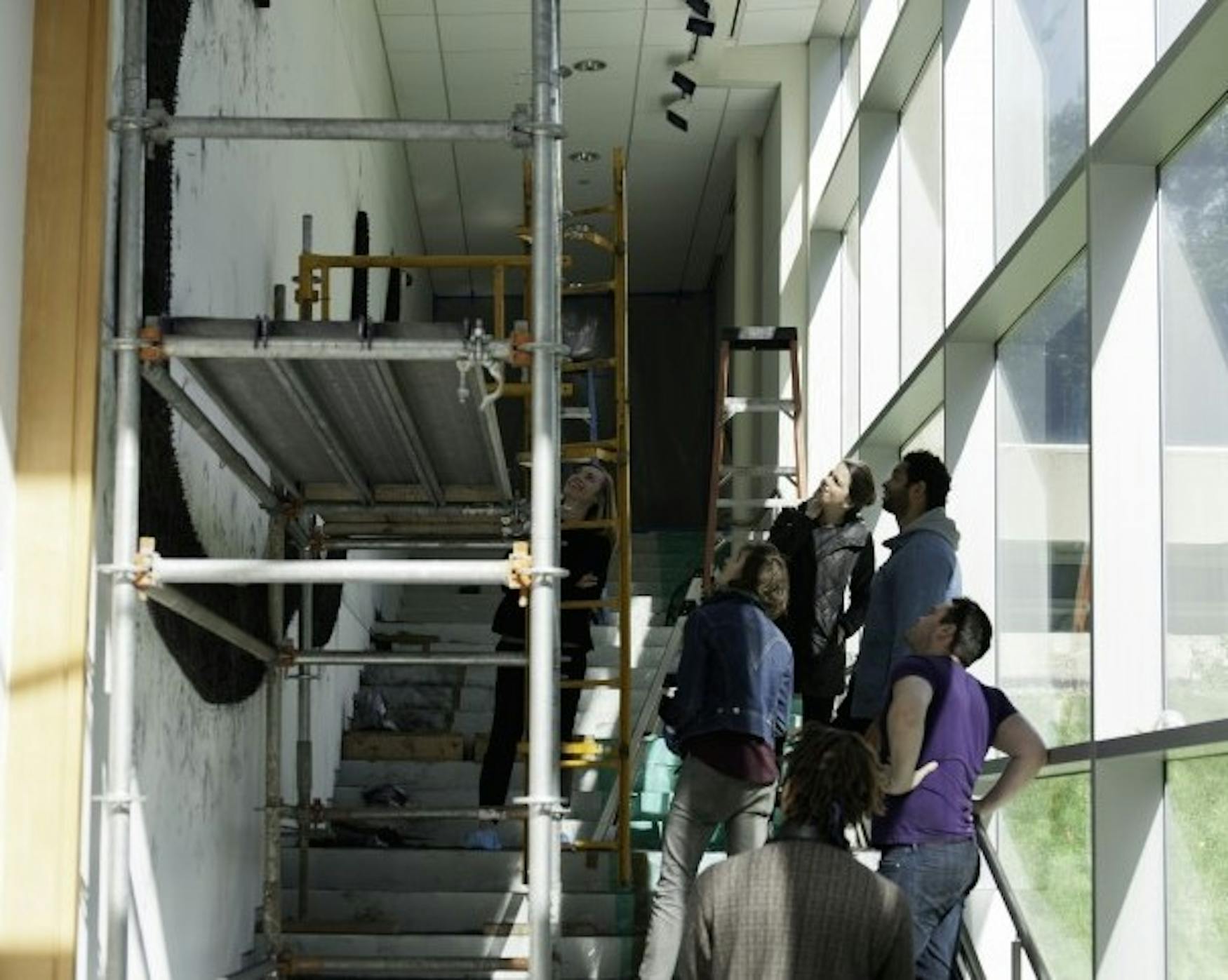Students become creators with new Rose installation
Students took a hands-on approach to fine art last week, helping the 2017 to 2018 Ruth Ann and Nathan Perlmutter Artist-in-Residence recipient install his latest creation, “Plunder.”
Now on display in the Rose Art Museum, the three-dimensional mural carries the imprints of its student creators, as well as a powerful message about racial tensions in America.
Tony Lewis, a Chicago-based artist, created “Plunder,” which is located on the outward-facing wall of the Lois Foster Wing, according to the Rose Art Museum’s press release. Although the mural appears to be an ambiguous swirling line, starkly black against the white wall, the shape of the piece is intentional and symbolic: Lewis used Gregg shorthand notation, a “stenographic script similar to abbreviated cursive,” to create an “abstracted symbol of the word ‘plunder,’ from which the work takes its name,” according to the press release.
As the museum’s press release explained, the title of the work comes from a powerful quote from Ta-Nehisi Coates’ book “Between the World and Me” — “The plunder of black life was drilled into this country in its infancy and reinforced across its history, so that plunder has become an heirloom, an intelligence, a sentience, a default setting to which, likely to the end of our days, we must invariably return.”
Lewis ‘wrote’ the word across the wall in a mural made of metal screws and graphite-dipped rubber bands. After drawing the symbol on the wall, Lewis drilled the screws directly into the museum’s structure, and University students then stretched the rubber bands between the screws.
When the students began work on Oct. 8, most of the screws had been drilled into the wall, but only a small section of rubber bands were applied.
The goal for the week was to create a mass of rubber bands in the shape of the symbol such that one could not see the wall through the web of rubber and graphite, said Orli Swergold ’18, one of the students working with Lewis, in an interview with the Justice.
From 10 a.m. to 6 p.m. every day, a rotating group of students worked with Lewis and his team to accomplish this task.
More than 25 pounds of rubber bands were used, said Hannah Kressel ’20, another student involved who was also interviewed by the Justice.
Although the work was simple, Lewis encouraged students to get into a “meditative, ritualistic state while putting the rubber bands on,” said Kressel. Even though she was creating someone else’s artistic vision, the fact that she was “getting into the meditative state that Lewis was thinking of when he thought up the piece” made her feel more connected to “Plunder,” Kressel explained.
Despite the calming nature of the work, the process of creating “Plunder” was incredibly messy due to the graphite powder in which the rubber bands were dipped, she said. Graphite dust spread around the edges of the symbol itself, but this offered the students a chance to include their own touch in Lewis’ work.
Swergold recounted the way Lewis’ team encouraged the students to make marks with their own hands in the dusty halo around the symbol. For Swergold, “to know [her] handprint is somewhere around there” helped “Plunder” feel more personal, instead of it being entirely Lewis’ work.
The Perlmutter Award, which made Lewis’ installation possible, is aimed at promoting young artists, according to the press release.
“Lewis’s residency and work promises to have especial resonance within our university community, where interdisciplinary dialogues about race and power are, given our political context, now more critical than ever,” said Luis Croquer, the Henry and Lois Foster director of the Rose, as quoted in the press release.
“Plunder” will be on display until June 10, 2018.
—Editor’s note: Hannah Kressel ’20 is the Arts editor of the Justice.



Please note All comments are eligible for publication in The Justice.